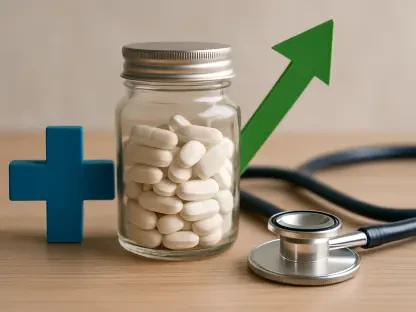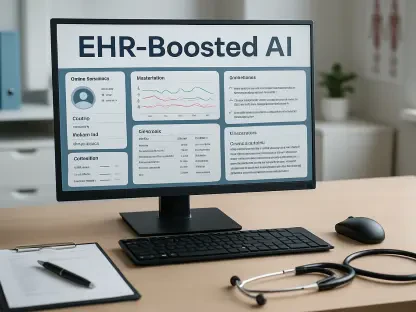I’m thrilled to sit down with James Maitland, a renowned expert in robotics and IoT applications in medicine. With a deep passion for harnessing technology to transform healthcare, James has been at the forefront of integrating innovative solutions into chronic care management. Today, we’re diving into the evolving world of digital health, with a focus on the role of GLP-1 medications in obesity care, the impact of recent industry shifts, and how companies like Omada Health are paving the way for personalized, tech-driven solutions. Our conversation explores the intersection of medication access, behavioral support, and cutting-edge tools like AI in shaping the future of patient outcomes.
How did the decision to start prescribing GLP-1 medications come about for a company traditionally focused on support services, and what was the driving force behind this shift in 2026?
The move to prescribe GLP-1 medications in 2026 was really a natural evolution for us. For years, we’ve been honing our weight management programs and offering robust support through our GLP-1 care track. But as demand grew, we heard loud and clear from our customers—health plans and employers—that they wanted a more integrated approach. They didn’t just want support; they wanted us to handle prescribing too, to create a seamless experience. It was less about a single “aha” moment and more about listening to the market and realizing we could make a bigger impact by closing that gap between medication access and lifestyle intervention.
In what ways does this new prescribing capability align with your broader mission of supporting chronic care management?
Our mission has always been about empowering people to manage chronic conditions like obesity, diabetes, and hypertension through sustainable, long-term solutions. Prescribing GLP-1s fits perfectly because it’s not just about handing out a drug—it’s about pairing that with behavior change programs, coaching, and data-driven insights. We’ve seen that 63% of our members maintain or even lose more weight a year after stopping GLP-1s, which shows that combining medication with wraparound care builds lasting habits. That’s the heart of chronic care management for us.
With the recent White House deal on lower-priced weight loss drugs, how do you see this influencing the strategies of digital health providers in the obesity care space?
The White House deal with major manufacturers to cut prices on weight loss drugs is a game-changer. It shifts the conversation from “Can patients afford these drugs?” to “How do we ensure they’re used effectively?” For digital health providers, it means we need to step up with solutions that prioritize outcomes over just access. Lower prices will likely push employers and health plans to expand coverage, but they’ll also demand proof of value—better health results and cost management. We’re focusing on delivering that through integrated care that maximizes the impact of these medications.
How is your company preparing to support patients navigating these new pricing options and the broader access to GLP-1s?
We’re doubling down on personalized care and education. With prices dropping, more patients will enter the fold, and they’ll need guidance on what formulation or type of GLP-1 works best for their unique situation. We’re building tools and care teams to help them understand their options, while also working with employers to align benefit strategies. Our nationwide presence across all 50 states allows us to provide consistent, high-quality support, ensuring patients aren’t just getting a prescription but a full roadmap to success.
What sets your GLP-1 care track apart from other digital health companies already in the prescribing space?
What makes our approach different is the depth of our wraparound services. We’re not just prescribing; we’re offering nutrition guidance, health coaching, and tailored support from cardiometabolic specialists. It’s about treating the whole person, not just the condition. Our data backs this up—63% of members maintaining or losing weight a year after stopping GLP-1s isn’t just a number; it’s proof that our behavioral support creates sustainable change. We’re building a foundation for long-term health, not a quick fix.
Can you elaborate on the specific challenges employers and health plans face with GLP-1 medications, and how your integrated services address those pain points?
Employers and health plans are wrestling with two big issues: ensuring appropriate use of GLP-1s and managing skyrocketing costs. Without guidance, there’s a risk of overprescribing or patients not getting the full benefit because they lack support. Our model combines prescribing with proven behavior change programs, so the first prescription flows directly into a lifestyle intervention. This seamless integration helps optimize outcomes while keeping costs in check by focusing on long-term results rather than short-term fixes.
With the emergence of oral GLP-1s and varying formulations, how are you ensuring patients receive the most suitable treatment at the right time?
The landscape is getting more complex with oral options, injectables, and different pricing tiers, so personalization is key. We’re leveraging data from over 100,000 GLP-1 users to match patients with the right formulation based on their health metrics, lifestyle, and circumstances. Our care teams, backed by AI tools, provide real-time insights to adjust plans as needed. Across all 50 states, we’re committed to maintaining high safety and quality standards, ensuring every patient gets tailored care no matter where they are.
Your membership has seen a remarkable 53% year-over-year growth to 831,000 members. What do you attribute this surge to?
This growth comes from our focus on treating people holistically, not just as a collection of conditions. Many of our members deal with multiple issues—obesity, diabetes, hypertension, or musculoskeletal conditions—and our multi-program platform resonates with employers who see the value in addressing these together. Our standard cardiometabolic programs are a big driver, alongside growing adoption of solutions like the GLP-1 care track. It’s about meeting customers where they are with flexible, comprehensive care.
How are innovations like AI and tools such as Meal Map enhancing the care experience for your members?
AI is transforming how we deliver care. Take Meal Map, for instance—it’s an AI-powered feature that focuses on nutrient quality over calorie counting, giving members instant feedback on their food choices. Paired with human coaching, it helps people make smarter decisions every day. We’re also weaving AI into our care team workflows and engineering processes to boost efficiency, so we can scale personalized support without losing that human touch. It’s all about making care more accessible and impactful.
Looking ahead, what is your forecast for the future of obesity care, especially with the rapid advancements in GLP-1 therapies and digital health technologies?
I think obesity care is on the cusp of a major shift. With GLP-1 therapies becoming more diverse—oral options, injectables, varied price points—and technology like AI advancing, we’re moving toward hyper-personalized care. The focus will be on matching the right treatment to the right patient at the right time, while ensuring safety and quality. Digital health will play a huge role in bridging gaps, integrating behavioral support with medication, and driving sustainable outcomes. I see a future where obesity care isn’t just about weight loss—it’s about holistic health transformation.









